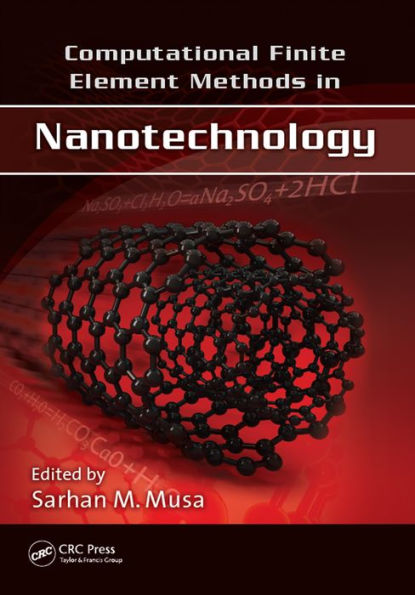Computational Finite Element Methods in Nanotechnology demonstrates the capabilities of finite element methods in nanotechnology for a range of fields. Bringing together contributions from researchers around the world, it covers key concepts as well as cutting-edge research and applications to inspire new developments and future interdisciplinary research. In particular, it emphasizes the importance of finite element methods (FEMs) for computational tools in the development of efficient nanoscale systems.
The book explores a variety of topics, including:
- A novel FE-based thermo-electrical-mechanical-coupled model to study mechanical stress, temperature, and electric fields in nano- and microelectronics
- The integration of distributed element, lumped element, and system-level methods for the design, modeling, and simulation of nano- and micro-electromechanical systems (N/MEMS)
- Challenges in the simulation of nanorobotic systems and macro-dimensions
- The simulation of structures and processes such as dislocations, growth of epitaxial films, and precipitation
- Modeling of self-positioning nanostructures, nanocomposites, and carbon nanotubes and their composites
- Progress in using FEM to analyze the electric field formed in needleless electrospinning
- How molecular dynamic (MD) simulations can be integrated into the FEM
- Applications of finite element analysis in nanomaterials and systems used in medicine, dentistry, biotechnology, and other areas
The book includes numerous examples and case studies, as well as recent applications of microscale and nanoscale modeling systems with FEMs using COMSOL Multiphysics® and MATLAB®. A one-stop reference for professionals, researchers, and students, this is also an accessible introduction to computational FEMs in nanotechnology for those new to the field.
Computational Finite Element Methods in Nanotechnology demonstrates the capabilities of finite element methods in nanotechnology for a range of fields. Bringing together contributions from researchers around the world, it covers key concepts as well as cutting-edge research and applications to inspire new developments and future interdisciplinary research. In particular, it emphasizes the importance of finite element methods (FEMs) for computational tools in the development of efficient nanoscale systems.
The book explores a variety of topics, including:
- A novel FE-based thermo-electrical-mechanical-coupled model to study mechanical stress, temperature, and electric fields in nano- and microelectronics
- The integration of distributed element, lumped element, and system-level methods for the design, modeling, and simulation of nano- and micro-electromechanical systems (N/MEMS)
- Challenges in the simulation of nanorobotic systems and macro-dimensions
- The simulation of structures and processes such as dislocations, growth of epitaxial films, and precipitation
- Modeling of self-positioning nanostructures, nanocomposites, and carbon nanotubes and their composites
- Progress in using FEM to analyze the electric field formed in needleless electrospinning
- How molecular dynamic (MD) simulations can be integrated into the FEM
- Applications of finite element analysis in nanomaterials and systems used in medicine, dentistry, biotechnology, and other areas
The book includes numerous examples and case studies, as well as recent applications of microscale and nanoscale modeling systems with FEMs using COMSOL Multiphysics® and MATLAB®. A one-stop reference for professionals, researchers, and students, this is also an accessible introduction to computational FEMs in nanotechnology for those new to the field.

Computational Finite Element Methods in Nanotechnology
640
Computational Finite Element Methods in Nanotechnology
640eBook
Related collections and offers

